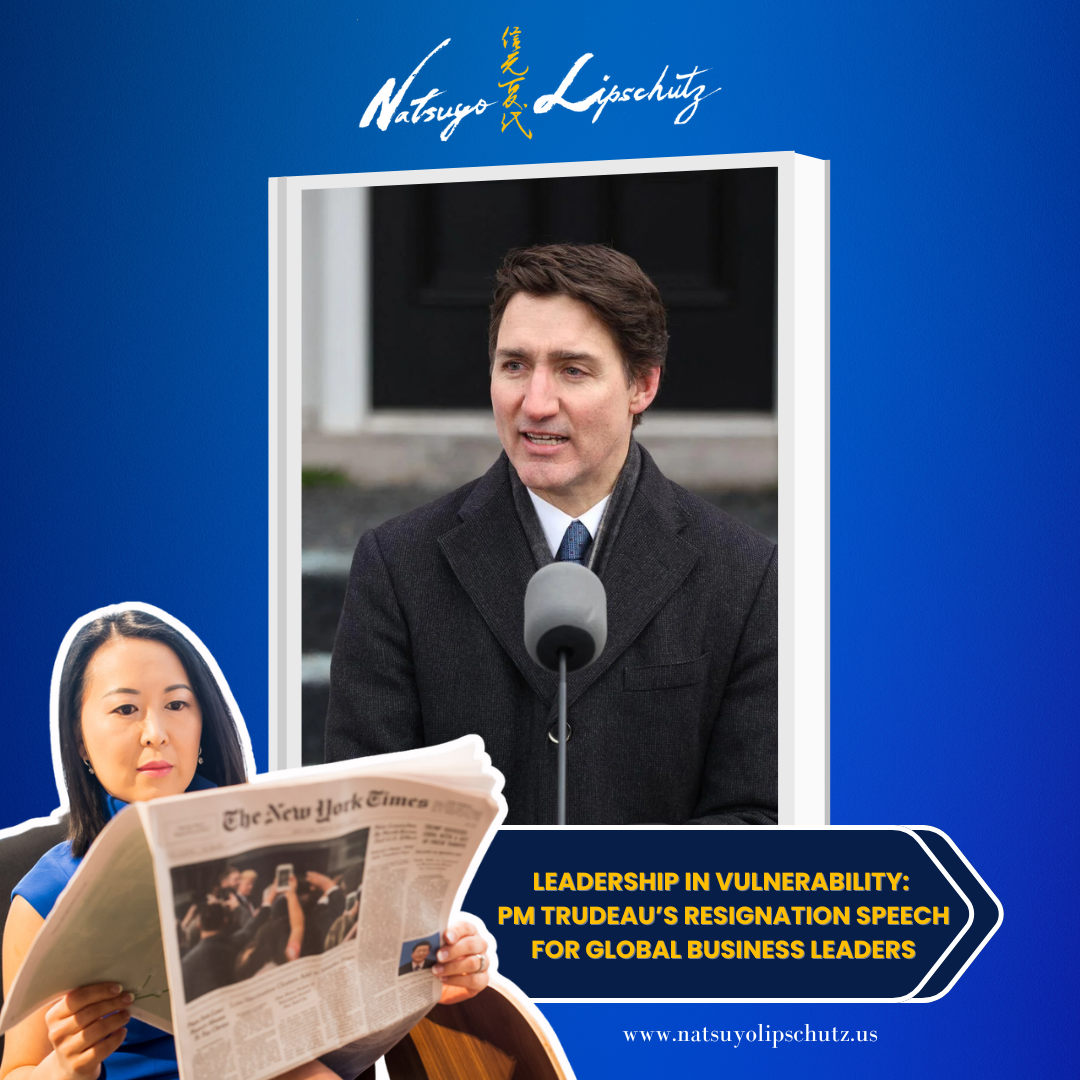
Global Business Leaders Can Learn from Canadian PM Trudeau’s Resignation Speech: Turning Vulnerability into Strength
On January 6th, Canadian Prime Minister Justin Trudeau announced his intention to resign. Trudeau became Prime Minister in 2015, and maintained a long tenure of over nine years, but his approval ratings have been declining in recent years, with calls for his resignation growing even within his party.
Concession speeches in U.S. presidential elections, resignation announcements, or public apologies alike, any speeches that include “negative” or “serious” topics are delicate and emotionally charged. Such speeches are inherently difficult.
Trudeau’s resignation speech was no exception. However, his courage to reveal his vulnerability transformed the speech into one of strength.
In this article, I will first analyze the speech from the perspective of cross-cultural communication, followed by the analysis of the speech itself.
Cross-Cultural Communication Insights
A Leader Who Shows Vulnerability is Strong and Trustworthy in Western Cultures
Arthur Milnes, a former speechwriter for former Prime Minister Stephen Harper and a government official in various roles, commented that Trudeau’s speech was overly restrained and that he should have highlighted his achievements more. However, I disagree.
In my analysis, Trudeau’s speech built trust and demonstrated leadership strength by showcasing vulnerability.
When discussing cross-cultural topics, I often emphasize the concept of “Culture of One” — every individual is uniquely different, and just because you think you understand some country’s culture doesn’t mean that you understand the person right in front of you. However, for the sake of analysis, allow me to generalize using Hofstede’s Cultural Dimensions Model.
In terms of Individualism v.s. Collectivism, Canada is known for its strong individualistic culture. Personal rights, freedom, and self-expression are valued, and decisions and actions are seen as individual responsibilities. In both family and workplace settings, personal contributions are recognized. Although Canada’s individualism aligns with the U.S., Canadians also prioritize empathy and cooperation.
Regarding Uncertainty Avoidance, Canada is relatively tolerant of uncertainty. New ideas and changes are welcomed, and risk-taking is seen positively, fostering innovation and entrepreneurship. At the same time, societal and organizational rules are respected, balancing order with progress.
The most striking difference between Japan, where I’m from, and Canada lies in Power Distance. Canada is known for its relatively low power distance, characterized by flat relationships between leaders and employees or teachers and students. Dialogue and idea exchange are encouraged, and hierarchical structures are less rigid, especially in workplaces.
In his speech, Trudeau candidly discussed the challenges and struggles he faced as Prime Minister. By acknowledging difficulties, his display of vulnerability aligned well with Canada’s high individualism and low power distance culture. This approach emphasizes sincerity and humanity, reinforcing trust and credibility as a leader.
In contrast, in cultures like Japan’s — which score high in uncertainty avoidance, collectivism, and power distance — leaders rarely reveal personal weaknesses publicly. In recall or apology press conferences, leaders bow in collective responsibility, reflecting a group-oriented culture. Even resignation is seen as representing the group rather than the individual. Hence, speeches that convey personal vulnerability are rare in Japan.
However, in individualistic, low-power distance cultures like Canada, it is not rare to see a leader share lessons learned through hardship, as Trudeau did. His reflections on leadership responsibilities and the need to pass the baton to the next generation highlight strength, not weakness.
Furthermore, Trudeau’s mention of sharing his decision with his family first reflects Canada’s individualistic and low-power distance tendencies. In Japan, such a display might be perceived as “too personal”, a sign of weakness.
Trudeau’s speech exemplifies how vulnerability can enhance sincerity and trust, serving as a successful case of leadership communication. This method, if adapted appropriately, could become a powerful tool for leaders who want to transcend cultural norms.
Trudeau’s Effective Speech Technique
Easing Tension with a Call-Back Opening
Trudeau’s lighthearted remark, “So I thought it might be fun for us to do this again” was an effective strategy to ease tension and foster connection with the audience. This approach effectively bridged the gap between him and the public.
More importantly, this opening employed a technique I refer to as “call-back.”
A call-back refers to revisiting past events or moments, bridging the past and present. In this case, Trudeau delivered his speech in front of Rideau Cottage, his official residence, where he had addressed the nation countless times during the pandemic. This setting evoked memories of his leadership during critical moments.
Thus, the opening phrase, “I thought it might be fun for us to do this again,” served as a call-back, reinforcing the significance of the location and setting the tone for the speech.
Maintaining a Positive, Neutral Tone
Despite the negative nature of a resignation speech, Trudeau maintained a consistently positive tone, emphasizing his accomplishments and pandemic response while framing his departure as a forward-looking transition for the next generation. This neutral and balanced tone avoided personal grievances or political conflicts, focusing instead on national interests.
Resignation speeches often risk being emotional or divisive. However, Trudeau’s ability to remain positive and unbiased offers valuable lessons for any global leader.
Emulating such techniques can help global leaders communicate effectively during difficult moments, enhancing trust and strengthening leadership presence.
For those who want to delve deeper into building persuasive speeches and presentations effectively, my book “Uncover Your Message” (Routledge Publishing) explains this process in detail.


